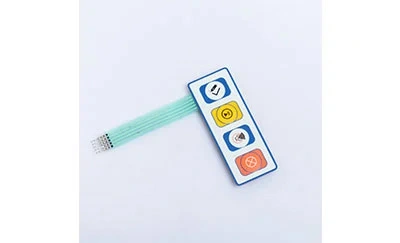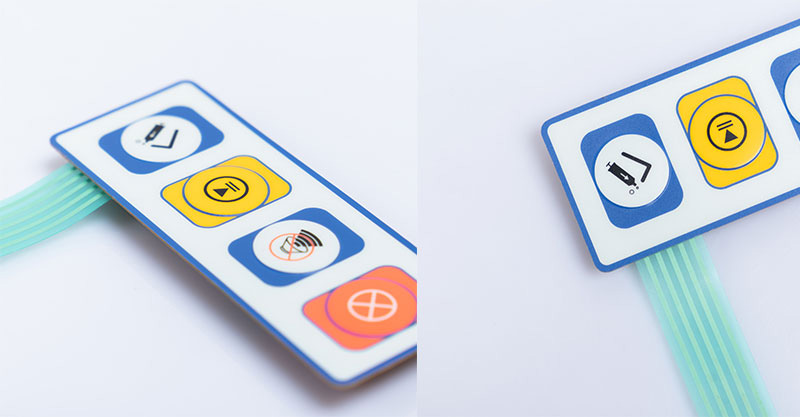
In today’s technology-driven world, the adage "Thin is In" couldn’t be more accurate, especially when it comes to the evolution of ultra-thin membrane switches. These innovative interfaces have revolutionized how we interact with various devices across numerous industries. From medical devices to consumer electronics, ultra-thin membrane switches offer an unparalleled blend of functionality, design, and tactile response. This article delves into the heart of this technology, exploring its inception, development, applications, and why it’s becoming the go-to choice for manufacturers and users alike.

Outline
Introduction to Ultra-Thin Membrane Switches
The Concept
Historical Overview
The Technological Evolution
Early Developments
Modern Advances
Why Thin is Beneficial
Space-saving
Flexibility and Durability
The Design and Manufacturing Process
Materials Used
Production Techniques
Applications in Various Industries
Consumer Electronics
Medical Devices
Industrial Controls
Comparative Analysis with Traditional Switches
Physical Differences
User Experience
Future Trends and Innovations
Smart Textiles
IoT and Connectivity
Challenges and Solutions
Manufacturing
Durability
Environmental Impact and Sustainability
Materials Recycling
Energy Efficiency
User Interface Design Trends
Minimalism
User-Centric Design
The Role in Enhanced User Experience
Tactile Feedback
Customization Options
Cost Analysis
Production Costs
Market Pricing
Regulatory and Standardization Aspects
Industry Standards
Compliance Challenges
Consumer Perception and Market Acceptance
Survey Insights
Market Growth Projections
Case Studies
Success Stories
Lessons Learned
Expert Opinions
Interviews with Industry Leaders
Analyst Predictions
The Concept
Ultra-thin membrane switches stand as a pinnacle of interface design, merging sleek aesthetics with groundbreaking functionality. At their core, these switches are about simplification and efficiency, minimizing space while maximizing performance.
Historical Overview
Tracing back to their inception, membrane switch products revolutionized user interfaces with their introduction. However, it was the push towards miniaturization and the demand for more compact, durable designs that gave birth to the ultra-thin variants we see today. This shift not only reflects advancements in material science and manufacturing techniques but also a broader trend towards sleeker, more intuitive devices.
Early Developments
The journey from bulky mechanical switches to their ultra-thin membrane counterparts marks a significant technological leap. Initial stages focused on reducing switch thickness without compromising reliability or tactile response, a challenge that spurred numerous innovations.
Modern Advances
Today, ultra-thin membrane switches utilize state-of-the-art materials and manufacturing processes, achieving thicknesses that were once deemed impossible. This progress is not just a triumph of engineering but also an enabler of new device categories, from wearable technology to foldable displays.
Space-saving
One of the most compelling advantages of ultra-thin membrane switches is their minimal space requirement. In an era where every millimeter counts, especially in compact electronic devices, these switches offer an ideal solution.
Flexibility and Durability
Despite their slim profile, ultra-thin membrane switches do not sacrifice durability. On the contrary, their design often enhances flexibility, making them suitable for a wide range of applications, from flexible screens to curved surfaces in ergonomic product designs.
Materials Used
The production of ultra-thin membrane switches relies on advanced materials, including polyethylene terephthalate (PET) and polycarbonate (PC), known for their strength, flexibility, and excellent electrical properties.
Production Techniques
Manufacturing these switches requires precision engineering and cutting-edge techniques, such as laser cutting and digital printing, to achieve the desired thinness and functionality. This section explores the intricate process behind creating these marvels of modern technology.
Consumer Electronics
In the realm of consumer electronics, ultra-thin membrane switches are ubiquitous, found in everything from smartphones to remote controls, where they contribute to sleeker designs and improved user experiences.
Medical Devices
The medical industry benefits greatly from the adoption of ultra-thin membrane switches. Their reliability, ease of sanitation, and ability to conform to various shapes make them ideal for handheld medical devices and wearable health monitors.
Industrial Controls
Even in the demanding environments of industrial applications, ultra-thin membrane switches prove their mettle, offering durability, precision, and customization options to meet specific operational requirements.
Physical Differences
This section provides a detailed comparison between ultra-thin membrane switches and traditional mechanical switches, highlighting the physical and functional distinctions that set them apart.
User Experience
Beyond their technical advantages, ultra-thin membrane switches offer a superior user experience, characterized by smoother operation, enhanced tactile feedback, and greater design flexibility.
Smart Textiles
The integration of ultra-thin membrane switches into smart textiles is a burgeoning field, promising innovative applications in fashion, healthcare, and wearable technology.
IoT and Connectivity
As the Internet of Things (IoT) continues to expand, ultra-thin membrane switches play a crucial role in enabling connected devices to be more intuitive and user-friendly, bridging the gap between humans and machines.
Manufacturing
Despite their many advantages, the production of ultra-thin membrane switches poses unique challenges, such as maintaining consistency at ultra-thin tolerances. This section explores these challenges and the innovative solutions developed to overcome them.
Durability
The durability of ultra-thin membrane switches is a common concern, given their slender profile. Here, we discuss how advancements in materials and design have addressed these durability issues, ensuring long-lasting performance.
Materials Recycling
The environmental impact of ultra-thin membrane switches, particularly concerning material use and recycling, is a critical consideration. This section examines the sustainability efforts within the industry, focusing on recycling initiatives and the use of eco-friendly materials.
Energy Efficiency
Ultra-thin membrane switches also contribute to energy efficiency in electronic devices, a key factor in reducing the environmental footprint of technology products. This segment delves into how these switches help conserve power in various applications.
Minimalism
The rise of ultra-thin membrane switches aligns with the broader design trend towards minimalism, emphasizing simplicity and clarity in user interfaces. This section explores how these switches embody and facilitate minimalist design principles.
User-Centric Design
At the heart of ultra-thin membrane switch development is a focus on the user. This part of the article highlights how these switches enhance user experience through customized feedback, intuitive operation, and seamless integration into device design.
Tactile Feedback
One of the defining features of ultra-thin membrane switches is their ability to provide precise tactile feedback, a crucial aspect of user satisfaction and interface effectiveness.
Customization Options
The versatility of ultra-thin membrane switches allows for extensive customization, enabling designers to tailor the user interface to specific needs and preferences. This flexibility is a significant factor in their widespread adoption.
Production Costs
The production of ultra-thin membrane switches involves specific materials and processes that influence their cost. This section offers a breakdown of these costs and how they compare to traditional switch manufacturing.
Market Pricing
Understanding the market pricing of ultra-thin membrane switches provides insights into their economic impact and accessibility. Here, we analyze the factors that determine their price in the marketplace.
Industry Standards
The production and use of ultra-thin membrane switches are governed by various industry standards and regulations, ensuring their quality, safety, and reliability. This section outlines the key standards and their implications for manufacturers and users.
Compliance Challenges
Complying with these standards can present challenges, particularly for new entrants to the market. We discuss the hurdles companies face and how they navigate the regulatory landscape to bring innovative products to consumers.
Survey Insights
Consumer perception of ultra-thin membrane switches is crucial to their market acceptance. This segment presents findings from surveys and studies that shed light on Consumer attitudes and preferences.
Market Growth Projections
The future looks bright for ultra-thin membrane switches, with market projections indicating robust growth. This analysis explores the drivers of this growth and the potential for these switches in emerging markets and applications.
Success Stories
Highlighting specific case studies of ultra-thin membrane switches in action provides concrete examples of their benefits and the challenges overcome during their implementation.
Lessons Learned
These case studies also offer valuable lessons for manufacturers, designers, and users, contributing to the continuous improvement and innovation of ultra-thin membrane switch technology.
Interviews with Industry Leaders
Insights from industry leaders and experts give a firsthand perspective on the current state and future direction of ultra-thin membrane switch technology, emphasizing its significance in the tech landscape.
Analyst Predictions
Market analysts offer their predictions for the ultra-thin membrane switch industry, identifying trends, opportunities, and potential hurdles on the horizon.
The journey of ultra-thin membrane switches from a niche technology to a cornerstone of modern device design underscores their importance in today’s digital age. Their evolution reflects broader trends towards miniaturization, user-centric design, and sustainable manufacturing. As we look to the future, it’s clear that ultra-thin membrane switches will continue to play a pivotal role in shaping the interaction between humans and technology, offering a perfect blend of form, function, and innovation. For those looking to integrate this technology into their products, partnering with membrane switch keypad suppliers can provide the expertise and quality needed to stay ahead in the competitive market.